The Apple iPhone 11, 11 Pro & 11 Pro Max Review: Performance, Battery, & Camera Elevated
by Andrei Frumusanu on October 16, 2019 8:30 AM ESTCamera - Low Light Evaluation
It’s hard to argue against the fact that over the last 2 years, Apple has largely fallen behind in terms of low-light photography. The advent of computational photography with new dedicated night modes, along with competitor devices which have massively more performant camera hardware, meant that the iPhone XS ended up being one of the least competitive devices in low light conditions. Some developers out there have even tried to address this gap with third-party camera applications which deliver their take on computational photography night mode capture.
Apple seems to have made note of this and the new iPhone 11 series now does address this missing feature. Let’s see how it holds up against the fierce competition:
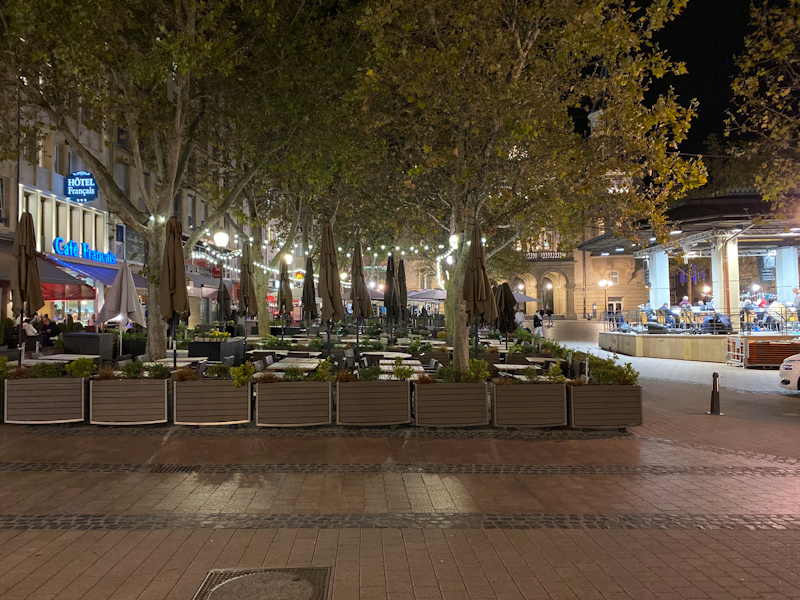
[ iPhone 11 Pro ] - [ iPhone XS ] - [ iPhone X ]
[ S10+(S) ] - [ S10+(E) ]
[ Pixel 3 ] - [ Mate 30 Pro ]
[ P30 Pro ] - [ Xperia 1 ] - [ G8 ]
Starting off with a low-light, yet still artificially illuminated scenario, we encounter the first aspect of Apple’s new camera: the night mode isn’t a dedicated mode that one can manually select. Rather, it's a mode that gets triggered automatically depending on the ambient light detected by the phone. In this scene, there was too much light available, and as such the phone wasn't able to trigger Night mode.
That isn’t to day that the iPhone falls behind, the main camera is still very much able to produce some excellent results. In such medium light scenarios, the telephoto lens’ wider aperture now allows the camera to actually use the module rather than falling back to the main sensor and cropping the scene, which is what the XS did.
Unfortunately, the wide-angle lens’ results here are just bad and it’s all just blurry. Huawei and Samsung clearly both dominate here in terms of low-light quality, with either better sensors such as the Mate 30 Pro, or making use of Night Mode on the wide-angle unit, something which isn’t available for the iPhone 11.
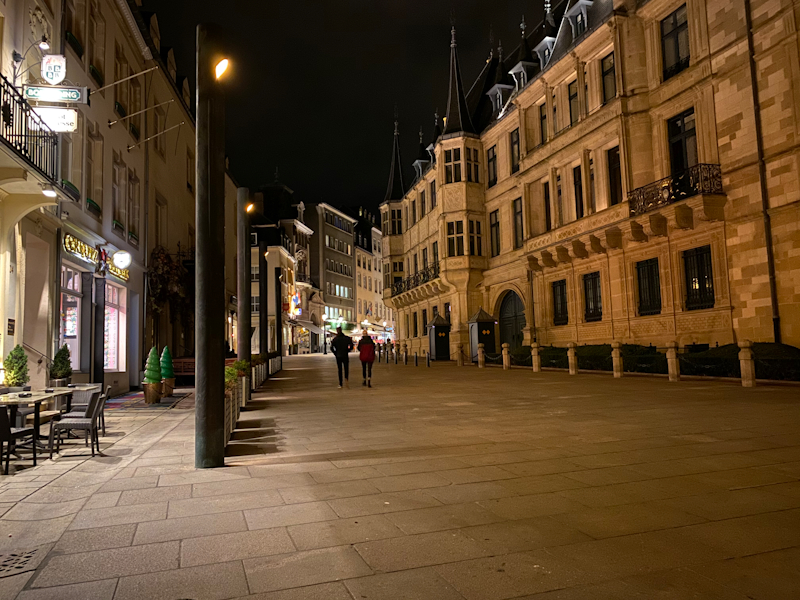
[ iPhone 11 Pro ] - [ iPhone XS ] - [ iPhone X ]
[ S10+(S) ] - [ S10+(E) ]
[ Pixel 3 ] - [ Mate 30 Pro ]
[ P30 Pro ] - [Xperia 1 ] - [G8 ]
Going to a darker scene, we now finally see Apple’s Night Mode in action. Apple’s non-night mode shot is actually more representative of the actual brightness of the scene at the time, but Night Mode really improves the amount of detail throughout the scene. Apple’s implementation here is superior to Samsung’s and Google’s, as it’s able to retain more detail and has a better handling of the noise. Samsung has the odd situation that the new Night Mode on the Snapdragon variants is inferior in quality to the Exynos based models, making things quite blurry. Huawei’s specialized low light RYYB sensor still is the best low-light camera.
It’s odd to see that Apple’s algorithm doesn’t attempt to bring down the highlights, as such the signs on the left which are still very much blown out and overexposed.
I tried to capture a picture with the Night Mode exposure set to the very maximum 10 seconds as made available in Apple’s camera UI, however the end result was always repeatedly always capped at the exposure the camera automatically selected, even if it did appear as if it’s capturing a 10 second shot. I retested this on the newest iOS 13.2 and things did change, as it was indeed able to capture a very different shot – so it seems the Night Mode behavior on iOS 13.1 is still bugged.
The iPhone’s 11 series' wide-angle module continues to be pretty terrible in low-light.
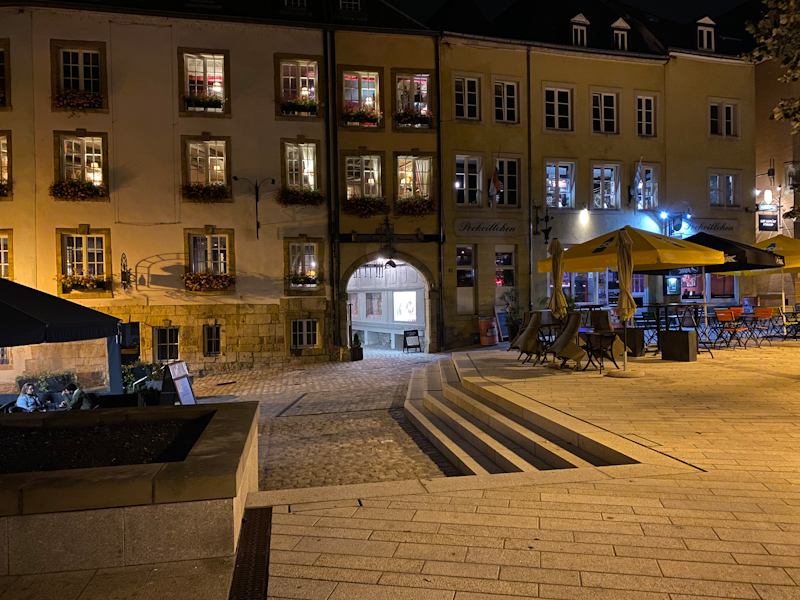
[ iPhone 11 Pro ] - [ iPhone XS ] - [ iPhone X ]
[ S10+(S) ] - [ S10+(E) ]
[ Pixel 3 ] - [ Mate 30 Pro ]
[ P30 Pro ] - [ Xperia 1 ] - [ G8 ]
Apple’s night mode here continues to impress as it’s able to reproduce an excellent representation of the scene with a lot of detail. Google’s Night Sight is comparable, or even better, in detail, however the colors are too vivid.
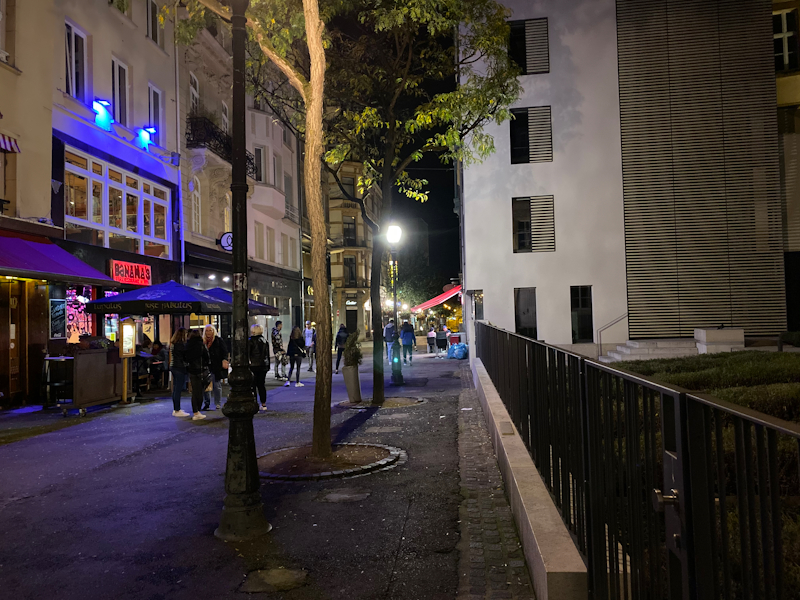
[ iPhone 11 Pro ] - [ iPhone XS ] - [ iPhone X ]
[ S10+(S) ] - [ S10+(E) ]
[ Pixel 3 ] - [ Mate 30 Pro ]
[ P30 Pro ] - [ Xperia 1 ] - [ G8 ]
We continue to observe that in more well-lit scenarios that the night mode doesn’t engage. Even without it, the new iPhone 11 is an improvement over the XS.
The wide-angle module remains terrible and frankly I’m a bit puzzled why it does so bad even in a more well-lit scene like this one. The phone gets pretty much embarrassed by all the other devices.
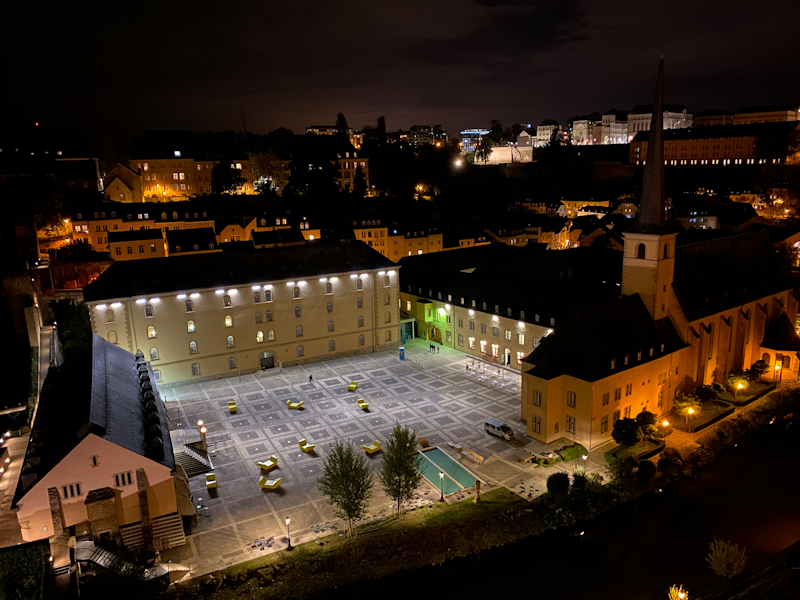
[ iPhone 11 Pro ] - [iPhone XS ] - [iPhone X ]
[ S10+(S) ] - [ S10+(E) ]
[ Pixel 3 ] - [ Mate 30 Pro ]
[ P30 Pro ] - [Xperia 1 ] - [G8 ]
One thing we notice about the new Night Mode is that it’s not really able to bring out details in areas where the sensor doesn’t see anything. For example, in this scene the roof of the abbey remains clipped to black, while other devices such as the S10 or the Pixel are able to bring out the roof’s structure and details. The darker it gets, and as long as there’s some brighter elements to the scene, we’re seemingly hitting dynamic range limitations on Apple’s night mode.
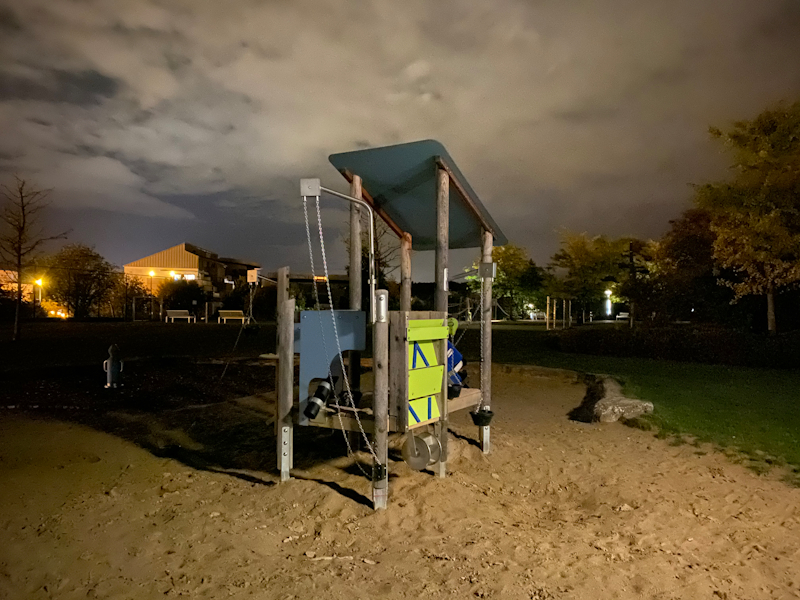
[ iPhone 11 Pro ] - [ iPhone XS ] - [ iPhone X ]
[ S10+(S) ] - [ S10+(E) ]
[ Pixel 3 ] - [ Mate 30 Pro ]
[ P30 Pro ] - [ Xperia 1 ] - [ G8 ]
In more uniformly dark areas, the iPhone is able to extract a ton of light, but in areas where the sensor just isn’t sensitive enough and it’s not able to provide any data for the algorithm to accumulate over time, it leads in some odd looking results such as this extremely pronounced shadow of the play castle.
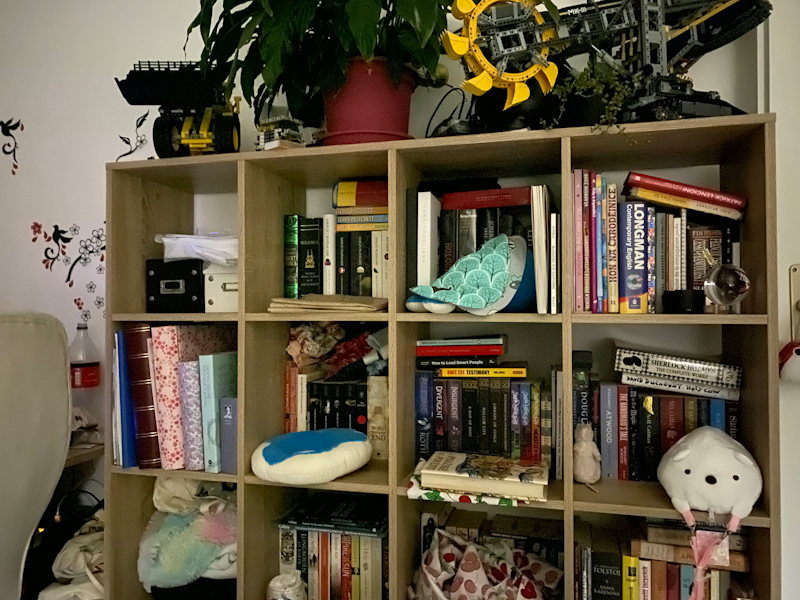
[ iPhone 11 Pro ] - [ iPhone XS ] - [ iPhone X ]
[ S10+(S) ] - [ S10+(E) ]
[ Pixel 3 ] - [ Mate 30 Pro ]
[ P30 Pro ] - [ Xperia 1 ] - [ G8 ]
Here again, in a very uniformly lit but still extremely dim scene, the iPhone 11 is able to bring out a ton of light and the result here is significantly brighter than how the scene was in reality. The iPhone beats Google and Samsung in terms of detail and only Huawei’s devices remain as the better rivals.
Low Light Conclusion – A Much Needed Feature Added, Wide Angle Lacking
Overall, Apple’s addition of the new night mode very much elevates the camera capture ability of the iPhone 11 series. It was as solemnly needed feature given that almost all other vendors in the industry have embarked on the computational photography train.
Apple’s implementation shines in a few regards: First of all the fact that it gets selected automatically rather than it being a dedicated mode that you have to switch to is a significant plus. as well as a very large practical advantage over other vendor’s camera experiences.
Quality-wise the pictures that the iPhone 11 series is able to produce in low light is top of the line and is challenged only by Huawei’s massive specialized camera sensors in terms of detail that it’s able to capture. There are a few limitations – for example the phone isn’t able to bring out details in areas where the sensor just doesn’t see anything, particularly scenes with brighter objects requiring a wider dynamic range in the capture is where things hit a snag, although details are still excellent even in these scenarios.
The biggest disappointment was the wide-angle camera. Here it’s not only that Apple’s night mode photography isn’t available for this unit, but the module doesn’t even compete against phones without their respective night modes enabled. So the iPhone 11 series is utterly put to shame when they do enable it. I do hope Apple is able to iterate on its processing for this unit as currently it’s just outright terrible and not competitive.
I do have a feeling that we’ll be seeing further updates and improvements from Apple in improving the various aspect of the camera. Already I did notice that iOS13.2 fixes exposures longer than 3 seconds for the night mode, and there’s of course the question of how Deep Fusion behaves in low-light scenarios where the night mode doesn’t kick in.










242 Comments
View All Comments
Total Meltdowner - Wednesday, October 16, 2019 - link
Bingo. I think the writer was just happy that he did notice performance improvements in this model. Still, the iPhone lacks innovation and that price tag is absurd. I'd buy it for $600 but $1000 or more? hah!Zerrohero - Wednesday, October 16, 2019 - link
“No innovation”Plenty of innovation. Read the review.
There is nothing absurd about the price tag. Not a bad price at all for your most important computer that you will use several hours per day for five years, if you want to.
Total Meltdowner - Thursday, October 17, 2019 - link
That isn't what I would call innovation. Their CPU is nice but that's about it. There is nothing you can do on the 11Pro that you couldn't do on an iPhone 7 -10.WinterCharm - Thursday, October 17, 2019 - link
Just because the visual style doesn't change does not mean there is "no innovation"There's a bunch of innovation on the chip side from Apple. You can either acknowledge that, or look like an idiot who screams no innovation while the iPhone has a 5x perf/watt lead over other ARM chips. To put that in context, it's 3-4 times the lead that Nvidia has over AMD.
Total Meltdowner - Thursday, October 17, 2019 - link
You can't do anything new with it that is worthy of praise.Jon Tseng - Wednesday, October 16, 2019 - link
Um, if you're expecting an iPhone with a removable battery, sd card slot and a non-bga socketed processor you're probably making a fairly material category error!!Zerrohero - Wednesday, October 16, 2019 - link
“ Also did author note how iPhone XS got the new battery throttling with latest iOS update ?”...which only kicks in when the battery is in bad shape and if it does, you can choose whether to throttle or not. Everybody’s XS models are running at full speed. But of course you know all this.
(Just get the battery replaced when it goes bad and you get five years of these iPhones)
A high end Android is way worse value for money because you simply can’t use it as long as an iPhone. No software updates after couple of years, apart from some rare exceptions.
When it comes to repairability, iFixit gave the new iPhones 6/10 which is better than most of the competition. For example, Samsung’s high end models are way worse when it comes to repairability.
Again, of course you know all this very well.
It’s always amusing how riled up some people get about the new iPhones. You do know that you don’t need to buy them, there are plenty of alternatives.
steven75 - Wednesday, October 16, 2019 - link
As someone living in the present year of 2019, I wish you welcome, my time-traveling friend! I hope your time spent here is illuminating before you go back to your "current" year of 2010.Total Meltdowner - Thursday, October 17, 2019 - link
There's a reason why the argument of "muh current year" is a meme. Time is irrelevant, functionality is everything.melgross - Wednesday, October 16, 2019 - link
That’s nonsense. You don’t even notice it after a while, and it’s just 2.5% of the screen. It’s a lot worse from companies that still have big bezels on top, and even one on the bottom, like the new Pixel 4 has. Totally wasted space.